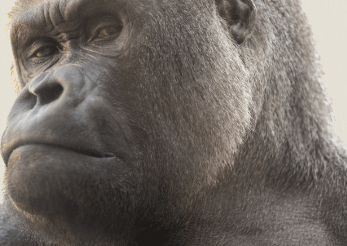PROJECT KOKO
The original goal of Project Koko was to see if it was possible to teach gorillas sign language and, if so, 1. ............................... This goal, which to a large extent has been achieved, has evolved to include other forms of communication, and the focus has shifted from pure scientific inquiry to producing benefits for great ape welfare, education, and conservation, using scientifically validated methods. Koko was born in the San Francisco Zoo in 1971, and spent the first six months of her life in the nursery of the children’s zoo behind a glass window where the public could see her, and where Penny Patterson, then a Stanford graduate student, met her. 2. ............................... Penny began working with Koko when she recovered her health, and requested permission from the zoo to continue working with her as part of her Ph.D. research in psychology at Stanford University. In the years since 1971, Penny (Dr. Patterson) has spent her life caring for Koko and two male gorillas (Michael and Ndume) and has established highly empathic relationships with them that may be difficult to replicate, due to the commitment required. A successful program such as this requires using language during daily documented interactions, as well as the ability to calmly “listen” to the gorillas and discern their meanings. 3. ............................... With Penny’s help, Koko has learned to use over 1,000 signs and seems to understand approximately 2,000 spoken English words. Further, Koko understands these signs sufficiently well to adapt them or combine them to express new meanings that she wants to convey. 4. ............................... Thus, with over 4 decades of multimedia research data accumulated, and more being collected daily, the challenge is to learn as much from our fellow great apes as possible and to enable the dialogue to continue beyond the scope of “Project Koko” for the benefit of all species concerned. (Reading text adapted from Koko: The Gorilla Foundation)

